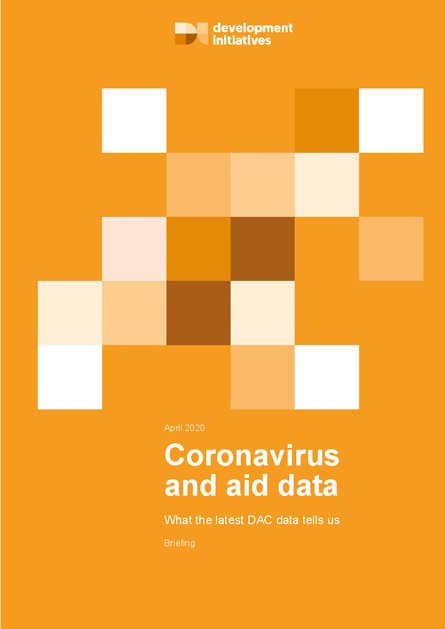
The world is facing an unprecedented challenge, with the vast impacts of coronavirus compounding worrying trends in aid. This briefing looks at the most recent trends in aid data (the OECD DAC’s release of provisional aid data for 2019) and considers what impacts the pandemic may have.
Even before the pandemic there were worrying trends in the economic outlook, both globally and for developing countries specifically.[1] For example, there were growing concerns of another debt crisis in developing countries, with 44% of low income countries (LICs) and least developed countries (LDCs) either at high risk of, or already in, debt distress. The global economic downturn and the immediate challenges of the health crisis both brought on by the coronavirus pandemic will, in many cases, exacerbate these concerns.
The impacts of the pandemic on global resource flows are already being felt. In March 2020 alone, investors pulled out approximately US$90 billion from emerging markets.[2] With other international flows such as remittances and receipts from tourism also set to fall, the counter-cyclical potential of aid (also known as official development assistance, or ODA) becomes increasingly important, not just in volume but also in the quality of that assistance and the use of appropriate tools and instruments for delivering it.
In addition to the immediate threat to lives and livelihoods (it is currently estimated that the crisis could push up to half a billion more people into poverty globally[3] and cause up to 3.3 million deaths in Africa alone[4]), the coronavirus pandemic is likely to stall and indeed reverse progress towards achieving Agenda 2030. In this context, as developing countries face multiple and overlapping health, economic and social crises sparked by coronavirus, the unique potential of ODA to limit its impact on the poorest and most vulnerable people will be vital.
This briefing highlights both positive aid trends from 2019 – including slight upticks in global aid and aid to the poorest countries – but equally some more problematic trends that are likely to be exacerbated by the current crisis. The paper also projects the impacts of the crisis on the volume of ODA and considers the implications of other significant trends in considering the response to the crisis in developing countries.